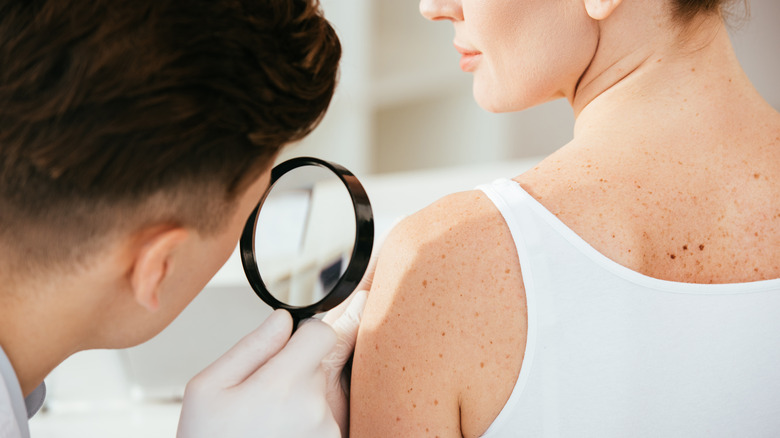The Truth About Skin Tags
If you've never had a skin tag before, it's best to imagine it as a kind of colorless pimple, but really they are simple tiny blobs that can pop up in a few different places. "Skin tags are these fleshy little bumps that are just annoying as can be," dermatologist Laurel Naversen Geraghty explained to Allure. "Skin tags can rub against clothing or get caught on jewelry and then they can get really irritated and inflamed. Some people's skin tags even bleed. Skin tags often form in areas of friction. They'll appear around the neck, under the arms, on our thighs, even around the eyelids," she continued.
While skin tags are completely harmless, they can be pretty annoying, especially if you're constantly catching them on things. If you thought removal was impossible, think again. According to experts, there is a way to remove skin tags — however, it's not possible to do it at home, so you're going to have to be prepared to fork out some cash and seek the assistance of your trusty dermatologist.
Skin tag removal methods differ based on size
Skin tag removal methods differ depending on size. If small, Geraghty says dermatologists will generally spray cold liquid nitrogen onto the skin tag a few times, which causes it to fall off in the days that follow. "The treatment stings for a few seconds, and it turns the area red and inflamed. Some people form little blisters or scab over in the few days after it, as the extreme cold has destroyed the skin cells in order to make the skin tag go away," she explained. In other words, scabbing is a good sign that the treatment has been successful.
When it comes to larger skin tags, the treatment is slightly different. "I like to just do a miniature injection of lidocaine to numb the skin and just snip them right off with some very sharp sterile scissors. It only takes a second to do," Geraghty told Allure. Again, a scab will signify that the treatment has been successful.
Though your skin tags are non-benign, if you have one and it's irritating you, it's important to get it checked out by your doctor or dermatologist to make sure it's not something more serious, and keep in mind that you can get them removed if they're annoying.

